
The Ultimate Guide to Table Tennis Rules in a Tournament
Is this your first time at a table tennis tournament?
I can give you a quick rundown of the rules if you like. As you can see, two players stand across from each other with a rectangular table divided by a net in between them. They each hold a paddle in his dominant, playing hand and assume either a crouched ready position or a slightly bent-at-the-knees playing position if the game has already started.
The paddle has to have a red-colored rubber on one side and a black-colored one on the other. You can choose to have the paddle outfitted with sidetape and a blade grip, or not. But the paddle and the rubber have to be in a good working condition, which is left to the consideration of the umpire. The aim of a player is to finish the race to 11 sooner than his opponent.
Before the Game Starts
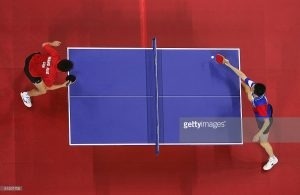
It can be quite challenging to see the little yellow or white ball whizzing from each side of the table as a spectator, and what more if you’re a player focusing on hitting it—which is why in official tournaments, wearing a white shirt (or yellow, if that’s the color of your official playing ball) is disallowed. Let’s step closer to watch.
This table’s match is just about to begin. The umpire presents a coin, and following the results of the coin toss, the player who guessed correctly is handed the ball. He is allowed to choose between serving and choosing one of the two ends of the table to position himself. They begin with a quick exchange of paddles, to check what the opponent is using. This is crucial, because you never know what types or combinations of rubber you’re up against.
Service and Receive
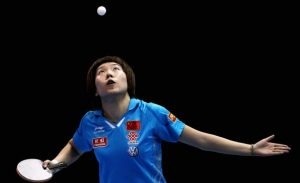
You can see that she’s being careful with his service, because if the ball does not first bounce from her side of the table to the other without crossing over or around the net, it immediately becomes a point of the opponent. If the ball bounces on his side and gets to the other side but brushes the net before bouncing on the other end, the umpire calls a let, which means the player has to serve it again with no points awarded to anyone.A quick rally to warm up, before the serving player begins the game. While there is no time limit as to how long you can deliberate before serving, the umpire (and your opponent) will doubtless become annoyed at you if you take an unreasonably long time to do so. There’s no fault in mentally strategizing a bit first, though.
See how she positions himself so that the ball and the paddle are visible, and how the ball is placed on the middle of her palm, with her hand stretched flat out and open. The ball has to be tossed before the server can work his magic on it, turning it into one of any variety of serves she has in his repertoire.
Oh—too bad! She failed to hit the ball as it was coming down from her toss, giving away the point to her opponent. Oh well, she still has one more serve. It doesn’t matter where the ball lands on the other side, because it’s a singles match. You’d have to watch out for that during a doubles match, though, but that’s for another time. Beautiful serve! Now the opponent is receiving the ball, and oh—it trips over the net, and lands short on the other side of the table, which the server couldn’t return. That’s not a let anymore, and he gets a full point for a good return.
Now it’s the opponent’s turn to serve. She serves a short to the right, and oh—her opponent made the mistake of touching the table with her free hand while reaching to return it, which earns the server a point. Neither your person nor what you’re carrying or wearing should touch the playing surface of the table, move the playing surface, or touch the net assembly while a rally (a ball in play) is in motion, or else your opponent gets the point.
Oh, that? Well, it should have been the server’s point because the ball brushed the edge of the table, which means it’s a good return or an edge ball. But, it’s all up to the umpire. He says he didn’t see the ball touch the edge, but the side, which isn’t allowed, and ultimately, it’s the umpire who decides if it’s a good ball or not.
Juice? Deux? Deuce?
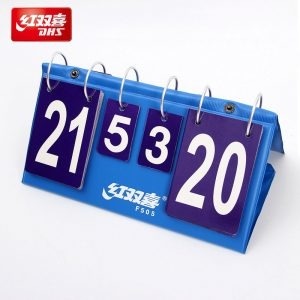
That was a close fight, wasn’t it? Usually the player who reaches 11 points first wins the set, but in this case, they were tied at 10-10. A player has to win by at least a margin of 2 points, so they had to keep alternately serving one service each until one of them got ahead by two points to win the set.
So now their set is at 1-0. You can see them going to the sidelines, this is their rest time. They can drink water and talk to their coaches, but they have to leave their paddles on the table. This short break is different from the one 1-minute time-out each player or his coach can call at any point during the game (but probably best not during a rally).
Now they’re going back to the table, they have to switch sides. This goes on alternately until one of them wins the best of any odd number of sets in a game. Usually it’s a best of 5, which means the first one to reach 3 sets, wins. The game’s over. It’s polite to shake the hand of your opponent afterwards, though some teenagers would prefer a high-five, whichever you want. You could also shake hands with the umpire or with the opponent’s coach. It’s a friendly match—and even if it’s official, shaking hands whether you win or lose is good form.
Doubles?
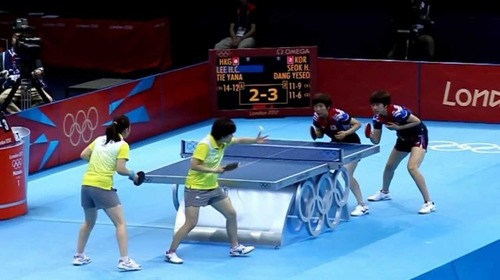
Oh, look there, a doubles match. Let’s go watch. Don’t they look coordinated, with their matching uniforms? Usually, in tournaments, doubles partners have to wear matching or near-matching attires, obviously more for the sake of the umpire and the spectators. It’s not that different from singles matches, except the white vertical line down the middle of the table is important now. The goal is still to win best out of 5, the first to reach 11 wins a set, and so on.
You can see that one of them is standing behind her partner and the other is standing more beside hers, anywhere you stand is fine, as long as you remember that each player cannot hit the ball more than once in succession.. Services should always bounce from the right side of the server’s end to the right side of the opponent’s. The referee is giving that point to the receiving team because the ball went past the white line, even if they’re arguing that it was exactly on the white line. Like I said, umpires wield the final decision.
So, Girl A and B vs. Girl X and Y. Girl A serves and Girl X receives for two balls, like in a singles match. Now that it’s Girl X’s turn to serve, Girl B is the one standing at the right side of the table. Girl B will receive for two balls and then it will be her turn to serve, with Girl Y receiving. For the next set, they’ll reverse the order of who receives whose serves. It’s a little confusing, but it’s easy to get the hang of it once you’re the one out there playing.
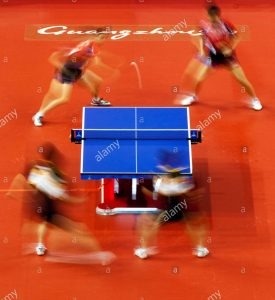
Girl Y is probably coaching Girl X on how to return Girl A’s serve. Like in a singles match, there’s no time limit to how long you can deliberate before you serve. Two players can be great individually, but they have to work together, and so, in a doubles match, communication is key. If you’re on the receiving end, you can also deliberate before receiving, you just have to raise a hand or an arm to show that you’re not ready while you’re discussing (with a soft voice, perhaps) what to do next. Any good serve that falls on the opponent’s court can be considered a let if neither player makes a move to receive it, showing that they weren’t ready. And I think that’s about all you need to know, let’s sit back and enjoy the game. Doubles match rallies can be really entertaining to watch, but challenging for the players. For one thing, they should always take turns returning the ball. The line doesn’t matter anymore once the initial receive is done, you can return them wherever on the other court’s playing surface in a rally. A good ball is when you hit it after it’s bounced on your end of the table just once; any more and it’s the opponent’s point. Doubles can be challenging because see how even though Girl X can only weakly return Girl A’s serve, Girl X positions the return right where Girl A is standing? This makes it impossible for Girl B to get to the ball. Oh—Girl A returned the ball meant for Girl B in her panic. That’s the opponent’s point.
Want to improve your game? Come train with us!

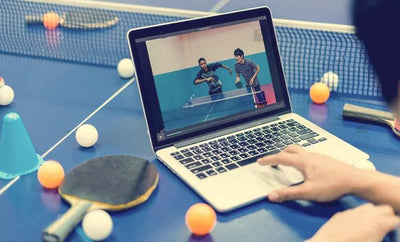


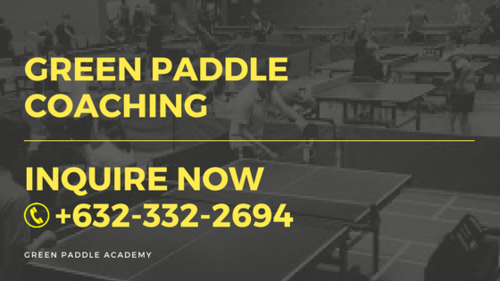
Leave a comment